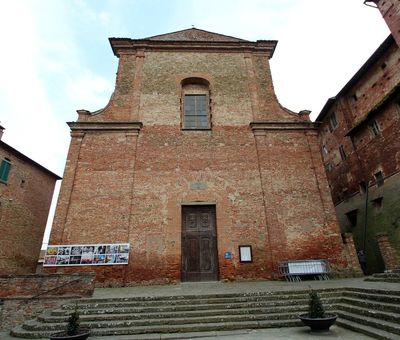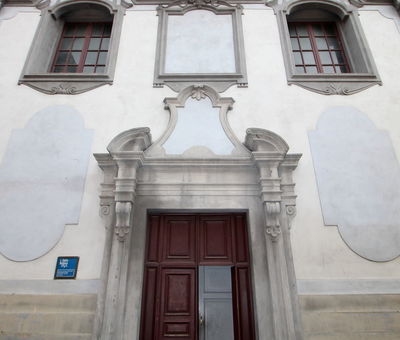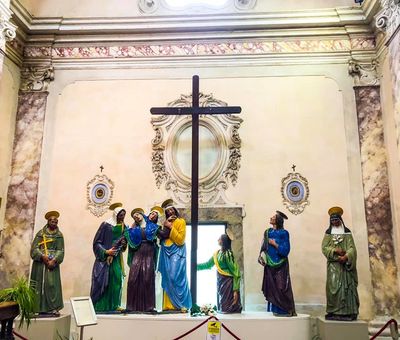Artworks, artworks everywhere
This museum city has Etruscan origins and the good fortune to have been the cradle of some titans of painting and sculpture. The signs are visible everywhere: in the small, almost defunct churches, on house doors, in the streets and on the citadel walls. It is a little jewel of exquisite artwork, celebrated even by Giorgio Vasari, who famously frescoed Foiano della Chiana and the battle of Scannagallo onto the walls of the Salone dei Cinquecento in Florence’s Palazzo Vecchio. And if sculpture has left the greatest mark here, thanks to the Della Robbia school, painting too has left us some precious works. The College of San Martino, where you can see the great panel that Luca Signorelli painted with the Coronation of the Virgin, would be evidence enough; and indeed the College Archives conserve, among its registry of comings and goings, the commission from 24 March 1552 that acquired the underwritten painting from Signorelli.
A little Robbian museum
If Tuscany is littered with masterpieces from the Della Robbia school, Foiano is a real find even for the experts. The Della Robbia established themselves as one of the most important families over the fifteenth and sixteenth centuries, renowned painters and sculptors who cultivated a special technique of working – and glazing – terracotta, which meant that their pieces could be displayed outside without deteriorating. They stumbled on the secret in their Florentine studio on Via Guelfa and jealously guarded it from that moment on. Water, stannic oxide and pure flint were the ingredients for the material, and as for the colours, stannic oxide again came in useful for the white, cobalt for the blue and copper for the green. These were really the only colours that the Della Robbia found they could exploit. Foiano della Chiana, which has been called “a little Robbian museum”, can claim many works from these artists, including the Madonna della Cintola in the College of San Martino, the Madonna with Child in the church of Santa Eufemia, an Ascension in the church of San Domenico, the group of Holy Women and a Christ crowned by the angels in the church of San Francesco.
Three centuries to put an artwork back together
It took painstaking restoration, even some recomposition, to let us admire the Virgin of the Spasms and the Crucifixion by Fra Ambrogio della Robbia: a work which, quite apart from its artistic value, has great significance for the local populace. After three centuries, the whole group of sculptures has been brought to light, representing the fever-stricken Virgin, supported by three women at the foot of the cross, with separate figures – attributed to Francesco della Robbia, one of two sons of Andrea – of Saint Francis, Saint Claire, Saint John and the Magdalen. Scholars have noted that the moment portrayed is that immediately before the death of Christ and not, as was customary, that of the Deposition.







